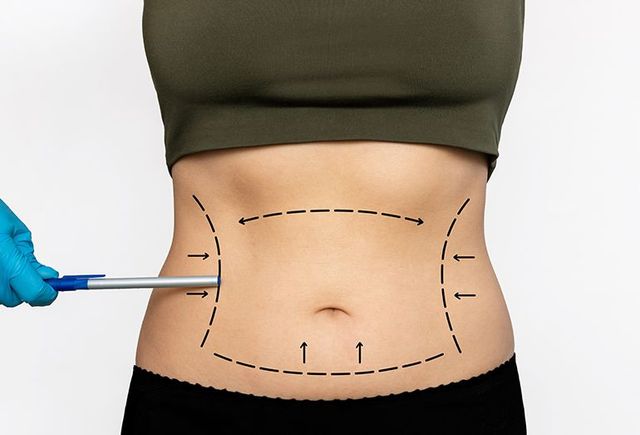A tummy tuck, also known as abdominoplasty, is a surgical procedure designed to remove excess skin and tighten abdominal muscles. The results of a tummy tuck vary significantly depending on an individual’s body type, skin elasticity, and overall muscle tone. While the procedure is widely sought for enhancing body contours, understanding how body type influences outcomes can help set realistic expectations.
Tummy Tuck Results for Petite Body Types
Individuals with petite body frames often experience dramatic visual changes after a Tummy Tuck Dubai. The removal of excess skin can create a noticeably slimmer and more toned appearance. Due to a smaller overall surface area, skin retraction is typically smoother, and muscle tightening can result in a flatter, firmer abdomen. Petite individuals often notice a higher definition in the waistline, making proportions appear more balanced.
Tummy Tuck Results for Athletic Body Types
Athletic body types, characterized by stronger muscle definition and lower body fat, tend to see enhanced results from a tummy tuck. Muscle tightening complements the natural abdominal tone, producing a sculpted and contoured midsection. For athletic individuals, the procedure can highlight existing muscle definition, providing a firmer look and improving overall symmetry. However, the presence of minimal fat can sometimes make subtle irregularities more noticeable, requiring precise surgical techniques.
Tummy Tuck Results for Curvy Body Types
Curvy individuals often experience a significant transformation in abdominal appearance post-procedure. Tummy tucks can enhance waist-to-hip ratios, resulting in a more balanced silhouette. Excess skin removal and muscle tightening work together to define the midsection, providing smoother curves. In curvy body types, careful planning is essential to maintain proportion and avoid overly tight or unnatural contours.
Tummy Tuck Results for Plus-Size Body Types
For plus-size individuals, a tummy tuck can dramatically improve abdominal shape and firmness, although the transformation may differ from smaller body types. Excess skin and fat can be more pronounced, so the procedure focuses on contouring and achieving smoother, tighter results. Post-surgery, the waistline becomes more defined, and clothing fits more comfortably, but results may require more extensive surgical adjustments to achieve desired proportions.
Skin Elasticity and Tummy Tuck Results
Skin elasticity plays a crucial role in how a tummy tuck affects each body type. Individuals with high elasticity tend to see smoother results, as skin contracts naturally after excess tissue removal. Those with reduced elasticity may experience less dramatic contouring, making pre-existing stretch marks or skin folds more visible. Proper assessment of skin quality helps tailor the procedure to the patient’s unique body structure.
Muscle Tone and Its Impact on Results
Abdominal muscle tone significantly influences tummy tuck outcomes. Individuals with strong core muscles often see more defined midsections post-procedure. Tummy tuck techniques that tighten underlying muscles can improve posture and abdominal firmness. Conversely, individuals with weaker muscles may experience a flatter appearance but might need additional focus on muscle repair to enhance overall results.

Fat Distribution and Abdominal Contouring
Fat distribution varies widely among body types and affects how results appear. Those with centralized abdominal fat often notice more dramatic changes after a tummy tuck, as the removal of fat and skin creates a smoother contour. In contrast, individuals with distributed fat around the sides or lower back may need complementary procedures to achieve uniform results. Understanding fat patterns helps predict outcomes and enhances satisfaction with the procedure.
Scarring and Body Type Considerations
Scarring is a natural part of the tummy tuck healing process. Body type can influence the visibility and placement of scars. Petite individuals often experience shorter, less noticeable scars, while plus-size or curvy bodies may have longer incisions to accommodate tissue removal. The position of scars is carefully planned to align with natural body folds, minimizing their impact on overall appearance.
Overall Shape and Proportion Changes
A tummy tuck not only flattens the abdomen but also improves overall body proportions. Each body type responds differently:
Petite bodies may achieve a more elongated torso appearance.
Athletic bodies often see enhanced muscular definition.
Curvy bodies enjoy a balanced waist-to-hip contour.
Plus-size bodies experience improved shape and clothing fit.
Setting Realistic Expectations
Understanding individual body type helps set realistic expectations for tummy tuck results. Each procedure is customized to address unique features, ensuring a harmonious and natural-looking outcome. Patients benefit from recognizing that results are influenced by factors such as muscle tone, skin elasticity, and fat distribution, rather than a one-size-fits-all approach.
FAQs
How does body type affect tummy tuck results?
Body type determines how skin, fat, and muscles respond to the procedure. Petite and athletic bodies often see more defined results, while curvy and plus-size bodies may need tailored adjustments for optimal contouring.
Can muscle tone improve tummy tuck outcomes?
Yes, stronger abdominal muscles contribute to a firmer and more sculpted appearance after surgery. Muscle tightening during the procedure enhances midsection definition.
Will skin elasticity change the appearance of the results?
Skin elasticity affects how well the skin contracts after excess removal. High elasticity leads to smoother results, while reduced elasticity may require additional contouring.
Are tummy tuck results permanent for all body types?
Results are long-lasting but can be influenced by weight fluctuations, pregnancy, and aging. Maintaining a healthy lifestyle helps preserve the abdominal contour over time.
This comprehensive look at how Tummy Tuck in Dubai results differ for each body type highlights the importance of individualized treatment planning. By considering factors like muscle tone, fat distribution, and skin elasticity, individuals can achieve the most flattering and natural outcomes for their unique shape.
